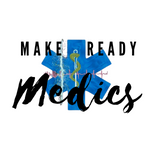In the fast-paced world of healthcare, the phrase “knowledge is power” takes on a literal meaning. Medical professionals hold lives in their hands, and their decisions can mean the difference between life and death. Given the gravity of this responsibility, continuous learning is not just a recommendation; it’s a necessity. This is especially true in Emergency Medical Services (EMS), where rapid decision-making is often required in high-stakes situations. In this post, we’ll explore the importance of ongoing education in the medical field and address a concerning phenomenon known as ‘Islands in EMS Education.’
The Ever-Evolving Medical Landscape
The medical field is continually evolving, with new research, technologies, and methodologies emerging regularly. What was considered best practice a decade ago may now be outdated or even harmful. As such, healthcare professionals must stay updated to provide the best possible care to their patients.
The Dangers of Complacency
Complacency in medical education can have dire consequences. Outdated practices can lead to ineffective treatments, misdiagnoses, and in the worst cases, loss of life. This is where the concept of ‘Islands in EMS Education’ becomes particularly concerning.
Islands in EMS Education: A Cautionary Tale
‘Islands in EMS Education’ refers to a phenomenon where a group of individuals, often in isolated or tight-knit communities, consider themselves experts on a particular medical topic. The issue arises when these so-called experts have not sought further education outside their community, leading to the perpetuation of outdated or incorrect information.
For example, a paramedic team in a small town might have been trained a decade ago in certain resuscitation techniques considered best practices at the time. Fluids in trauma stand out. We are no longer giving heavy fluid boluses in trauma. If none of the team members have updated their training or knowledge, they continue to be an ‘Island,’ teaching and practicing outdated methods that could be less effective or even harmful.
Breaking Free from the Island
To avoid becoming an ‘Island’ in EMS education, it’s crucial to engage in continuous learning. Here are some ways to do that:
1. Regular Training and Certifications
Ensure that you and your team undergo regular training sessions and renew certifications as required. Many medical organizations offer online courses that can be completed at your convenience. Check out the NAEMT courses. They are updated regularly. Look at going to classes slightly above your scope as well like CCEMT-P as well.
2. Attend Seminars and Workshops
Participate in relevant seminars, workshops, and conferences. These events provide valuable insights into the latest research and practices in the medical field. I’ve been to the last 7 EMS World Expos and 8 in total. I have learned so much from them I cannot begin to explain. Ones I recommend:
3. Subscribe to Medical Journals
Keep yourself updated with the latest research by subscribing to reputable medical journals and publications. Not only EMS World but affiliated health journals help as well.
4. Peer Reviews and Consultations
Regularly consult with peers and experts outside your immediate circle. Peer reviews can offer new perspectives and might point out gaps in your knowledge or practice. Start conversations with your medical directors in your system.
5. Leverage Technology
Use online platforms, apps, and other technological tools that offer updated medical information and training. Many of these online courses can be done through your employer and state EMS office as well.
Conclusion
Continuous learning is not just beneficial but essential in the medical field. It ensures that healthcare professionals are equipped with the most current knowledge and skills, ultimately leading to better patient outcomes. By actively seeking ongoing education and being aware of the dangers of ‘Islands in EMS Education,’ medical professionals can contribute to elevating the standard of care across communities.
